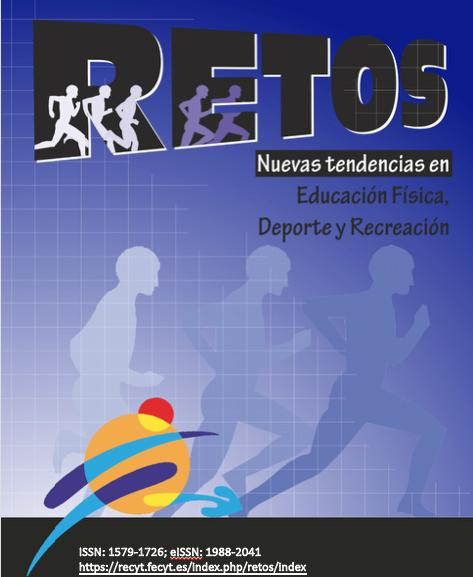An empirical study on the impact of mobile learning apps on college students' physical education learning
DOI:
https://doi.org/10.47197/retos.v68.116385Keywords:
mobile educational applications, Physical Education, College Students, Skill Acquisition, Gamification, Motivation, Learning OutcomesAbstract
Introduction: The objective of this study was to assess the mobile learning apps on the college students’ physical education with an emphasis on skill acquisition, theoretical knowledge, motivation, and learning engagement.
Following the philosophy of positivism, the study’s guide was deductive reasoning, it employed primary quantitative methods and secondary qualitative reviews. Data was gathered through questionnaires which were administered to a sample of 100 students and their responses analyzed with statistical software SPSS.
The study found that mobile applications enhanced students understanding of theoretical concepts in PE to a large extent while the improvement in the students’ physical skills was moderate. Students’ motivation and commitment towards learning were enhanced by the gamified and interactive nature of the content. On the downside, the lack of standardized content in the application and unequal access to technology among learners undermined the overall impact mobile applications could make. The findings of the qualitative analysis added to the initial findings by primary data as they showcased in the literature provided some of the same conclusions.
The overall findings of the study indicate that mobile learning applications positively influence the defined objectives of the education framework often referred to as PE, but without appropriate access and well-planned integration into the curriculum, the applications are rendered ineffective.
References
Abduljawad, M. and Ahmad, A., 2023. An analysis of mobile learning (M-Learning) in educa-tion. Multicultural Education, 9(2), pp.145-152.
Alonso-Fernández, D., Gutiérrez-Sánchez, Á., Portela-Pino, I. and Taboada-Iglesias, Y., 2022. Evalua-tion of applications for mobile devices on the practice of physical exercise in adoles-cents. Applied Sciences, 12(6), p.2784.
Asare, S., Addae Kyenkyehene, S. and Kwadwo Emmanuel, M., 2023. Interactive tech-nology in physi-cal education classroom: A case of a Ghanaian college of education. American Journal of Educa-tion and In-formation Technology. https://doi. org/10.11648/j. ajeit, 20230702
Bracho-Amador, C.M., Granero-Gallegos, A., Baena-Extremera, A. and López-García, G.D., 2023. The effect of the motivational climate on satisfaction with physical education in secondary school education: mediation of teacher strategies in maintaining discipline. Behavioral Scienc-es, 13(2), p.178.
Dey, B. and Kumar, R., 2024. Breaking barriers: The empowering effects of mobile e-learning for women in the digital age. In Bharati International Journal of Multidisciplinary Research & De-velopment (BIJMRD) (Vol. 2, No. 5).
Diekhoff, H. and Greve, S., 2023. Digital technology in game-based approaches: video tagging in foot-ball in PE. Physical Education and Sport Pedagogy, pp.1-13.
Gil-Espinosa, F.J., Nielsen-Rodríguez, A., Romance, R. and Burgueño, R., 2022. Smartphone applications for physical activity promotion from physical education. Education and Information Technolo-gies, 27(8), pp.11759-11779.
Goodfellow, L.T., 2023. An overview of survey research. Respiratory Care, 68(9), pp.1309-1313.
Mödinger, M., Woll, A. and Wagner, I., 2022. Video-based visual feedback to enhance motor learning in physical education—a systematic review. German journal of exercise and sport re-search, 52(3), pp.447-460.
Qureshi, M.I., Khan, N., Raza, H., Imran, A. and Ismail, F., 2021. Digital technologies in education 4.0. Does it enhance the effectiveness of learning?
Reports and data, 2022. Education Apps Market Size, Share, Trends, By Product Type (Web-Based and Mobile-Based), By End-Use (K-12 Education and Higher Education), By Operating System (IOS and MacOS and Android), and By Region Forecast to 2030. Available at: https://www.reportsanddata.com/report-detail/education-apps-market
Song, X., 2024. Physical education teaching mode assisted by artificial intelligence assistant under the guidance of high-order complex network. Scientific Reports, 14(1), p.4104.
Tsie, M.J., 2022. Exploring the use of mobile learning applications in the Physical Sciences classroom.
Yahya, S.M.N.S., Jamaludin, K.A. and Mazalan, N.S., 2025. Systematic Mapping Review on Mobile Apps Integration in Physical Education: Implications for Health, Training, And Teacher Sup-port. African Journal of Biomedical Research, 28(1), pp.40-54.
Zhou, T., Wu, X., Wang, Y., Wang, Y. and Zhang, S., 2024. Application of artificial intelligence in physical education: a systematic review. Education and Information Technologies, 29(7), pp.8203-8220.
Zulkifli, A.F. and Danis, A., 2022. Technology in physical education: Using movement analysis applica-tion to improve feedback on sports skills among undergraduate physical education stu-dents. Social Sciences & Humanities Open, 6(1), p.100350
Downloads
Published
Issue
Section
License
Copyright (c) 2025 Hao Wu, FuGao Jiang

This work is licensed under a Creative Commons Attribution-NonCommercial-NoDerivatives 4.0 International License.
Authors who publish with this journal agree to the following terms:
- Authors retain copyright and ensure the magazine the right to be the first publication of the work as licensed under a Creative Commons Attribution License that allows others to share the work with an acknowledgment of authorship of the work and the initial publication in this magazine.
- Authors can establish separate additional agreements for non-exclusive distribution of the version of the work published in the journal (eg, to an institutional repository or publish it in a book), with an acknowledgment of its initial publication in this journal.
- Is allowed and authors are encouraged to disseminate their work electronically (eg, in institutional repositories or on their own website) prior to and during the submission process, as it can lead to productive exchanges, as well as to a subpoena more Early and more of published work (See The Effect of Open Access) (in English).
This journal provides immediate open access to its content (BOAI, http://legacy.earlham.edu/~peters/fos/boaifaq.htm#openaccess) on the principle that making research freely available to the public supports a greater global exchange of knowledge. The authors may download the papers from the journal website, or will be provided with the PDF version of the article via e-mail.


